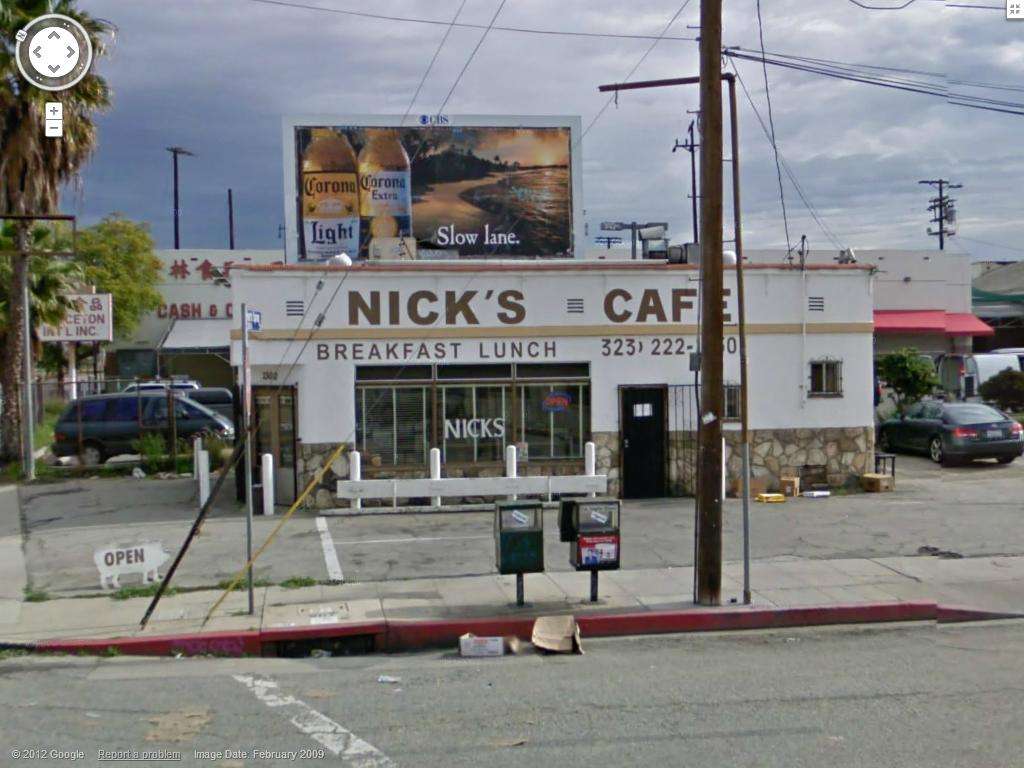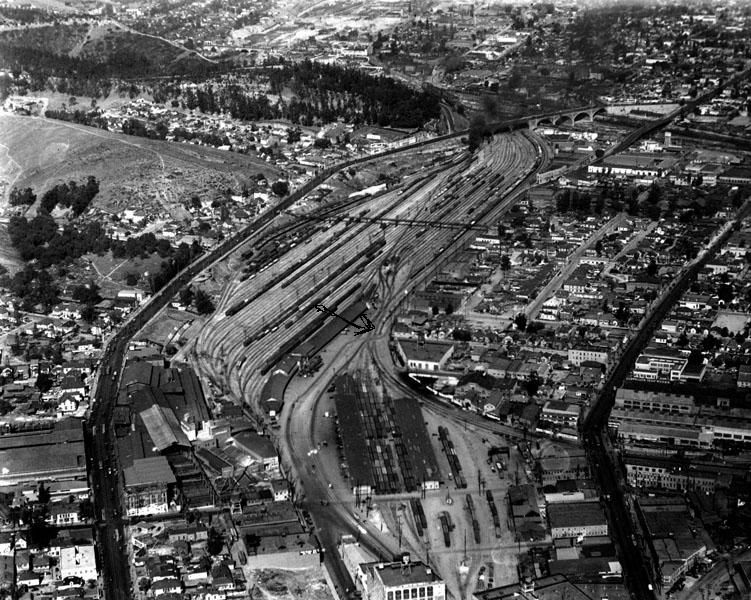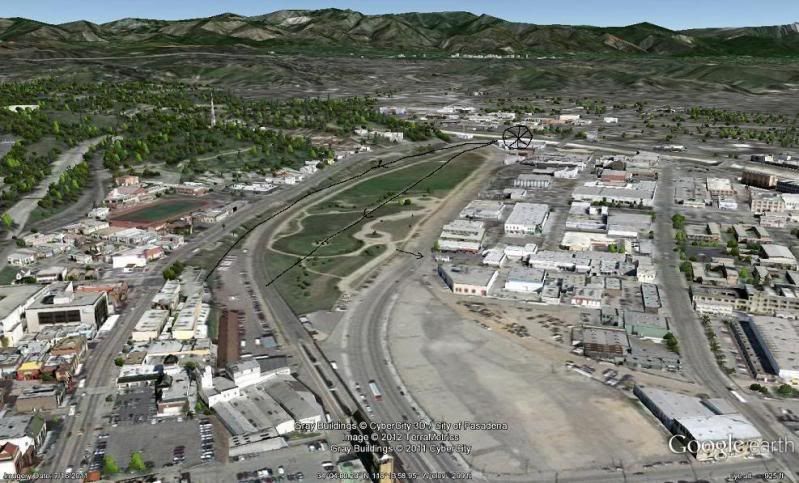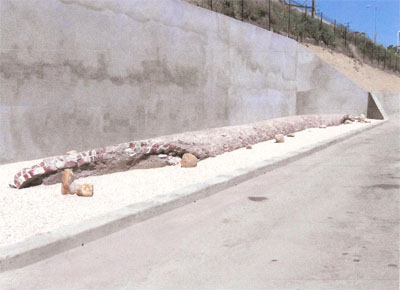Quote:
Originally Posted by ethereal_reality

This place is quite cute. Notice the 'open' sign shaped like a pig. 

google street view |
If truth be told, I'm more of a Los Angeles Pueblo-file than a Noirist but I've found a happy home here because I dearly love Old Los Angeles and there's more Noir here now, today than a long gone crumbling adobe village to enjoy. I can mostly only visit the old pueblo of Los Angeles in books and faded photos.
I brought up the subject of Nicks Cafe at 1300 North Spring Street across from the old train yard now called The Cornfield.
The sign at Nicks says since 1948. I think I have proof of that little building from 1924. Lookie here. Here's a photo from (supposedly) 1924 showing the old train yard with the footbridge. I've drawn an arrow mid-photo pointing to the Nick's building followed by a modern Google photo of the same area with a crude arrow pointing to the same little building - I think:
 http://jpg1.lapl.org/pics25/00032359.jpg
http://jpg1.lapl.org/pics25/00032359.jpg corn field 1924

I've also drawn in a crude caricature in the top distance of a water wheel to show approximately where water was drawn for the pueblo from the Los Angeles River via that method to feed the Zanja Madre or "Mother Ditch" to supply water to the village around the 1860s, being at higher ground, and have drawn thin black lines showing two routes the Zanja took over the years. The first being an open ditch running downhill more or less cutting straight across The Cornfield (probably inaccurate) and another enclosed in brick and buried up against the steep western slope which has recently been rediscovered and partially excavated and now stands revealed as a monument of sorts in the Cornfield Park.
 http://jpg1.lapl.org/pics20/00009662.jpg
http://jpg1.lapl.org/pics20/00009662.jpg
It ultimately dumped water into a large brick and mortar cistern in the central Los Angeles Plaza where the band stand is now located seen to the far right in the first photo with the Plaza Church to the far left. Other ditches carried the rest of the water elsewhere as needed.
 http://digitallibrary.usc.edu/search...=1337231855130
http://digitallibrary.usc.edu/search...=1337231855130
 http://digitallibrary.usc.edu/search...=1337231463910
http://digitallibrary.usc.edu/search...=1337231463910

Further reading on the Zanja Madre:
http://waterandpower.org/museum/Zanj...ueduct%29.html